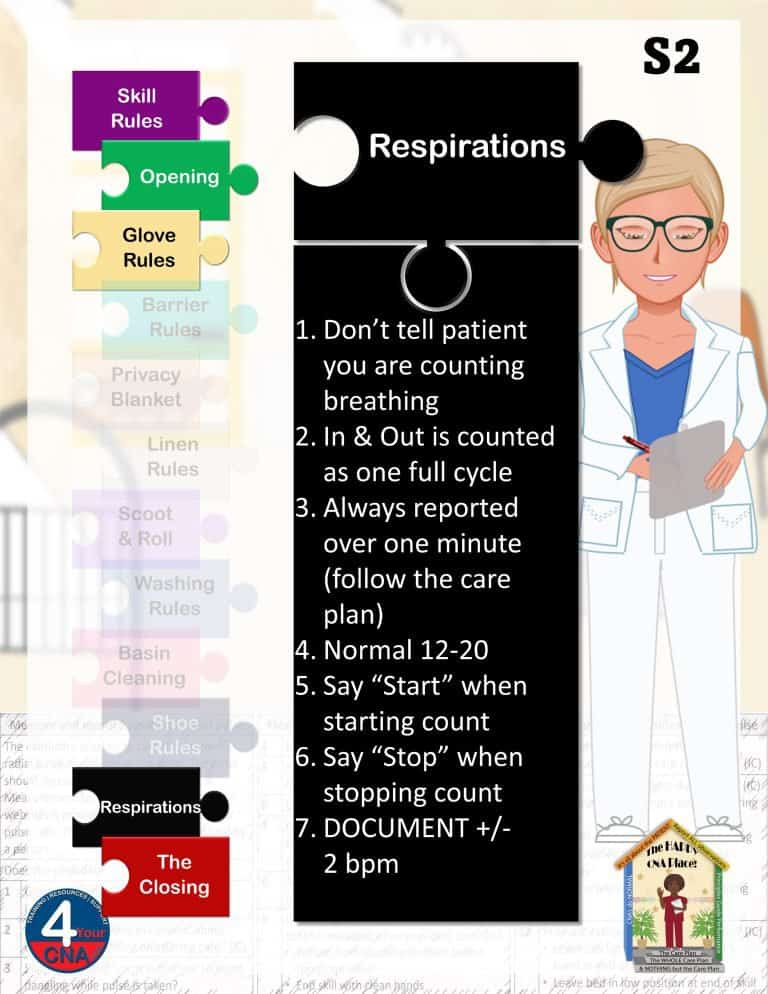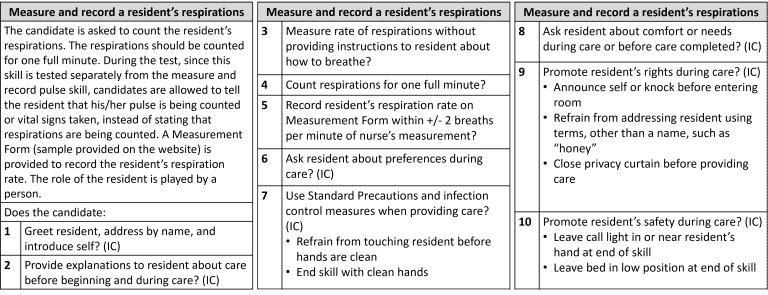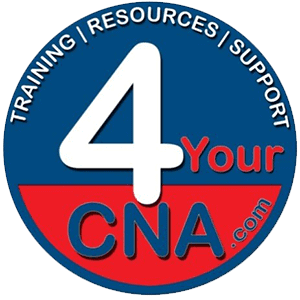Measure and Record Respirations
Measuring and recording a patient’s respirations is a vital component of vital signs monitoring in healthcare. Respiratory rate can signal early signs of distress, deterioration, or respiratory disease—making it crucial for timely intervention. Unlike heart rate or temperature, patients often unconsciously alter their breathing when aware it’s being monitored. This makes proper technique essential for accurate readings. Mastering this skill helps ensure patient safety, supports clinical decision-making, and meets professional and regulatory standards in any medical setting.
Remember: Normal is 12-20 BPM. ALWAYS report abnormal to the Nurse.
1. Preparation & Hand Hygiene
- Read and follow the Care Plan, the whole Care Plan, and nothing but the Care Plan.
- Knock and announce yourself before entering.
- Greet the Resident by name and introduce yourself.
- Explain the task to the Resident and ensure their comfort and consent.
- Avoid instructing Resident on “how” to breath to ensure accuracy or bringing attention to their breathing.
- Example: “I am hear to take your Vital Signs, is that ok?
- Close the Privacy Curtain
- Wash your hands thoroughly before beginning.
- Assess Glove Rules (Are Gloves required for this Resident?)
2. Positioning the Resident
- Ask the Resident to extend one arm comfortably, palm up.
- Support the arm at the elbow and ensure the Resident is relaxed and sitting or lying calmly.
- Optional: Place an Alcohol Pad on Resident’s abdomen to help visualizing respirations.
3. Locating the Radial Pulse
- Place the pads of your second and third fingers lightly on the thumb side of the Resident’s wrist, just below the base of the thumb.
- Don’t use your thumb, as it has its own pulse.
4. Counting the Respirations
- A Respiration is one full “In and Out” breath.
- Remember to vocalize “Start” when you begin counting, and “Stop” when you finish counting. This ensures accuracy with the Evaluator.
- If counting for 60 seconds isn’t required (e.g., facility protocol), count for 30 seconds and multiply by two—verify with your site’s guidelines first.
- Remove fingers from the Resident’s wrist.
5. Address Resident Comfort
- Ensure Resident is comfortable.
- Ask about Resident needs and preferences.
- Provide Resident with Call light.
- Open the Privacy curtain and ensure bed is in lowest position.
6. Recording the Measurement
- Thoroughly wash your hands.
- Record the Residents Respirations.
- Record additional relevant observations:
- rhythm (regular vs irregular),
- strength (strong vs weak).
- Or any other pertinent info on the appropriate form or electronic record.
- Thoroughly wash your hands.
- Think about the Steps of your Skill. Make any corrections. Tell the evaluator your Skills is complete.
- Not reading and following the Care Plan, the whole Care Plan, and nothing but the Care Plan.
- Not counting for the time indicated on the care plan
- Influencing Resident’s breathing/instructing Resident on how to breath.
- Not documenting your reading.
- Not ensuring bed is left in the lowest position.
- Not providing Resident with Call Light.
Remember: Normal is 12-20 BPM. ALWAYS report abnormal to the Nurse.


Join our FREE Classroom Livestream on Mondays & Wednesdays from 9am – 1pm (ET) on FLCNATraining.com!

